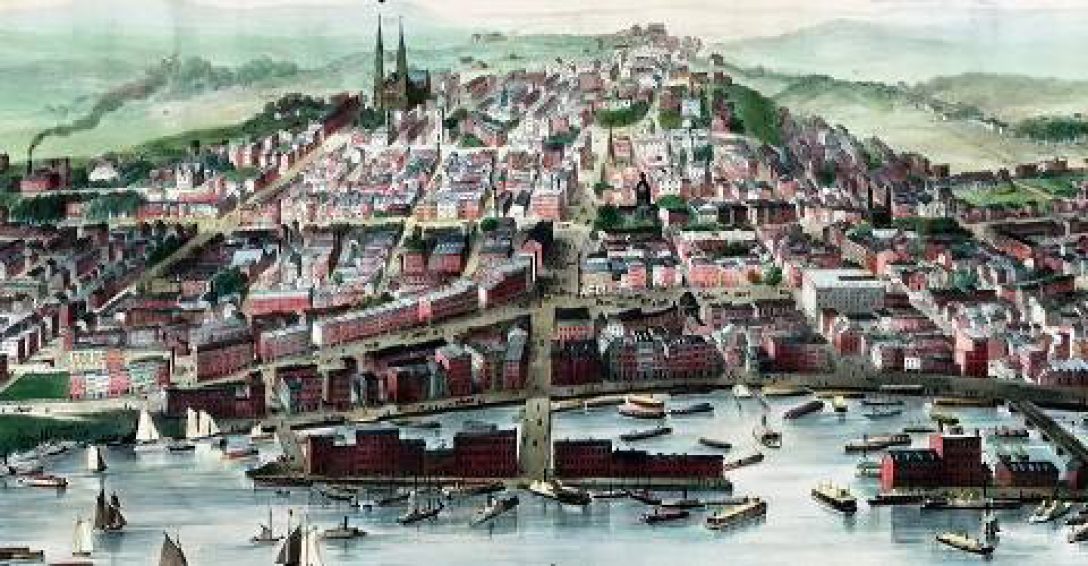I came across this picture, taken on State St. in 1911. It’s photo of Dr. Mary E. Walker.

I had one of those lightbulb moments. My Gram used to tell me about a nice old lady in Albany who wore men’s clothing. who often lived at the YWCA on Steuben St. Gram said her brothers and male cousins used to try to knock off her silk top hat with snowballs. And then her uncle would “thrash” them.
To be honest, I filed it under “whatever”. Just another Gram story (there were hundreds – oft repeated) and the reference to men’s clothing meant nothing to me. (I wore jeans.. so what?) Yadda Yadda Yadda. Now I wish I paid more attention.
Dr. Mary Walker is the only female recipient of the Medal of Honor. Her story is remarkable.
She was born in Oswego in 1832 into a family of devoted Christian non–sectarian “free thinkers”. By 1855 she’d earned a medical degree from Syracuse Medical College (only the second women in the U.S. to do so). She set up practice in Rome NY, but volunteered with the Union Army when the Civil War started.
Her initial petition to serve as a physician in the Army Medical Corps was rejected. Yet she waded in, tending the wounded with selfless devotion (and performing surgery when necessary). Finally in 1864 President Lincoln approved her petition, providing the male physicians agreed. Again, she didn’t wait for permission and traveled to the join the Army of the Cumberland. Walker was met with hostility. She compounded her sin of gender by her eccentric dress – she wore bloomers and treated Confederate civilians. Wild rumors circulated. She was a lesbian, she had a high ranking officer lover, she was a spy. In spring 1864 she was captured by Confederate troops and served as a POW for a number of months until released in a prisoner exchange.
In 1865 President Andrew Johnson awarded her the Medal of Honor (she was also awarded a military disability pension for injuries suffered). When a review of recipients was performed in 1917, her name, with about 900 others (including Buffalo Bill Cody), was deleted from the list, thought to have not sufficiently met the standard for the award. In 1977 President Carter’s Administration restored the Medal.
After the War Walker became involved in a variety of social and political reforms including temperance, women’s suffrage and dress reform. In her early days she wore trousers underneath shortish skirts. Later she settled on a traditional Prince Albert coat, necktie and trousers. She was arrested for her “costume” on several occasions as she traveled across the country lecturing and fund raising for her causes.*

It was the issue of women’s rights that consumed most of her attention in later years. Consequently, she spent much time in Washington D.C. lobbying Congress and attempting to sway the New York State Legislature. In the decade or so leading up to the first NYS referendum on a woman’s right to vote in 1915 (which was defeated) she was a constant fixture in Albany. Sadly it seems that her eccentricities deflected from her lobbying efforts.
(Dr. Walker suffered an injury in 1915 and retired to her home in Oswego where she died in 1917. )
As I dimly recall from Gram stories the uncle who would “thrash” the boys for taunting Dr. Walker was a prominent figure in Albany Civil War veterans’ organizations. Thinking back, it seems he expressed no special warmth for Dr. Walker, but did demand the young men of Albany treat her with deference and respect for the role she’d played in the War.
*In 1982 the U.S. Postal Service issued a 20 cent stamp that featured a curiously feminine “very girly” image of Dr. Walker. She probably would not have approved.

Copyright 2021 Julie O’Connor



